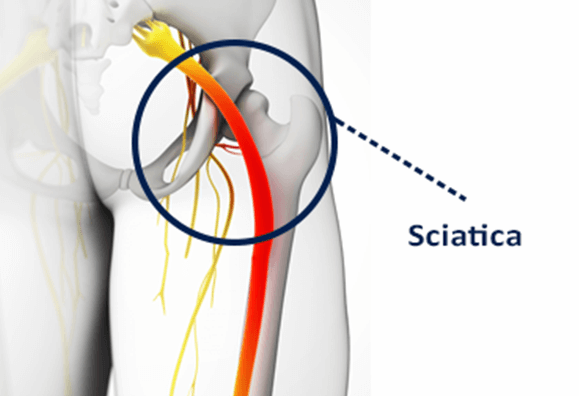This blog is excerpted from Harvard Medical School’s Harvard Healthbeat publication.
Regardless of the cause, about 90% of people with sciatica can get better in just a few weeks. You can start treating your sciatica at home.
Cold and heat
Both ice packs and heat can be used to get sciatica pain relief and help you function better.
For the first seven days, use ice. Place ice packs on your lower back to reduce inflammation of the sciatic nerve. Be careful not to give yourself frostbite. Icepacks shouldn’t directly touch the skin; wrap them in a cloth or towel. Leave them in place for no more than 15 to 20 minutes at a time, with at least a 15- to 20-minute break in between. Try a cycle of on-off-on-off-on (this will take between 75 and 100 minutes). Then take a break to see how you feel.
Another way to apply cold to a painful area is an ice massage. Freeze water in a paper cup and then tear away the top half of the cup. Using a circular motion, massage the lower back with the ice. Cover an area about six inches in diameter, and keep the cup moving to prevent frostbite. Avoid the bony part of the spine. Massage for no more than 10 minutes and wait at least an hour between massages.
It’s okay to try some gentle stretches between ice applications, though better to wait about half an hour for the area to warm. Three to five applications per day may help relieve some of the pain.
Heat can be used after the first week, when some healing has taken place and the pain is subsiding. (If the pain has not subsided at all after a week, visit the doctor.) Heat treatments will increase the flow of blood to the area, which can speed healing. Heat also will relax the muscles to allow for gentle stretching that can help to relieve the pain.
You can use a hot water bottle or heating pad wrapped in a towel, or soak in a warm bath. If you use a water bottle or heating pad, apply it to your lower back. Improperly applied heat treatment can cause burns, so follow a few rules:
- Place a cloth barrier between the heat source and your body (if using a hot water bottle or heating pad).
- Make sure that the treatment feels warm, not hot; if it is uncomfortably warm, it’s too warm.
- Apply heat for at least 15 minutes, but no longer than two hours. The duration depends on your pain level.
- If using a heating pad, take care not to fall asleep while applying it.
Movement
Moving is probably the most important thing you can do to help your pain.
Many people with sciatica put themselves on bed rest, or lean back in an easy chair, thinking that this will help them to heal. It doesn’t!
It’s okay to rest for the first couple of days after sciatica pain starts; after that, staying in bed usually makes things worse, not better. Moving helps your pain in several ways:
- It strengthens your muscles, which helps to support your spine.
- It can improve flexibility and range of motion.
- It boosts blood flow to all areas of the body, including injured areas, which speeds healing.
- It reduces the perception of pain.
Once your sciatica is under control, keep moving to decrease the likelihood that it will return. Sitting for long periods of time isn’t good for anyone. Extended sitting can increase your risk of sciatica and also can make sciatica worse once you have it.
If you have sciatica, move as much as you can as soon as you can. If moving seems to make the pain worse, it’s best to see a doctor and talk through what’s going on.
If Home remedies don’t relieve pain, there is still help!
If you’ve tried these techniques and are still looking for relief from numbness, tingling or sciatic nerve pain and have already tried conservative treatments such as physical therapy, chiropractic treatment or steroid injections, the Bonati Spine Institute can help. By utilizing the outpatient Bonati Spine Procedures, with techniques developed and patented by Dr. Bonati, patients have received amazing results and report a 98.75% patient reported satisfaction rating. To discuss your case with our team, simply click here or call us at 844-663-1224.
To read the full Harvard Healthbeat article click here: https://www.health.harvard.edu/pain/sciatica-home-remedies-and-self-care

